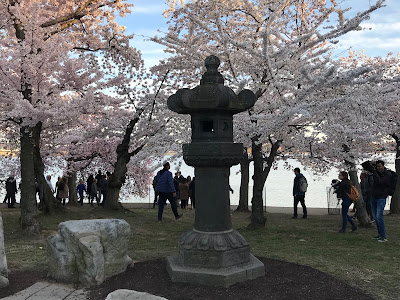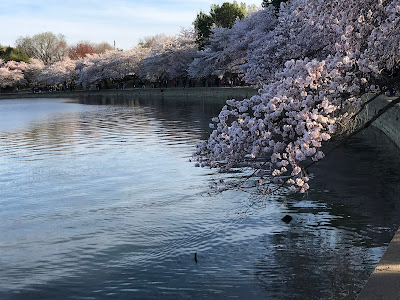Hanami
I just happened upon the ranger talk at the Tidal Basin last evening at 6 p.m. I’d decided to see the cherry blossoms after work, and then, impulsively, walked counterclockwise instead of the other way around. And there, at the FDR Memorial, was a green-suited ranger with a Smokey the Bear hat.
He was speaking of L’Enfant when I arrived, but went on from there to cover the flood of 1881, the creation of the Tidal Basin and the ugly construction-site look of the land around it at the turn of the 19th century. He described National Geographic writer Eliza Scidmore’s 24-year campaign to plant Japanese cherry trees around the basin, a quest that finally took root, so to speak, when President Taft’s wife, Helen, became interested in the project. (The lantern above commemorates the spot where Taft planted one of the first cherry trees.)
There are other twists and turns to this story and how cherry trees came to dominate the landscape around the Washington and Lincoln monuments. But my favorite part of the talk came when the ranger talked about the Japanese custom of hanami or “flower viewing” of the sakura or cherry blossoms.
The sakura represents a “short life, well-lived,” the ranger said, and for that reason was revered by both samurai warriors and kamikaze pilots. Hanami celebrates the fleetingness of the blossoms, the beauty that is ours just for a moment — and more lovely because of it.



